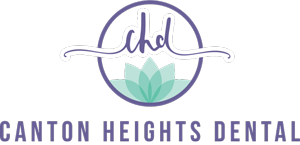11 Oct Energy Drinks and Your Child’s Teeth. Should You Worry?
The hard clack of cleats echo about as your “little” sports hero rushes to get out of the house … soon to be late for practice. Armed with all they’ll need for a day in the sun, their equipment bag is packed and slung awkwardly over one shoulder, bursting at the seams with untold numbers of pads and dirty gear. And after making a final beeline through the kitchen to raid your refrigerator of a 64oz bottle or two of rainbow-colored sustenance, they’re off for what will no doubt be another grueling practice session. You’re proud of your kids – they’re growing up. And yet you wonder as you stare at the door that just shut behind them. Are those techni-colored drinks they’re drinking every day hurting them?
The truth, unfortunately, is yes. While they may keep your children energized and awake for the next few hours, the bad news is, they’re secretly eating away at their teeth – and fast.
Why Are Energy Drinks Such a Threat to Teeth?
The crux of the problem is the double-whammy that comes from an exceedingly high sugar content and citric acid pH that can be as low as 2.9. Now, we understand pH can be a tricky thing to understand, so to help put that number in perspective, a bit, consider this: battery acid has a pH of 0.0 (so, a lower number means a higher acid content). Stomach acid (which we can imagine as being quite acidic, at least!) has a pH that fluctuates between 1.0 and 3.0. A lemon, in contrast, comes in at around 2.0, a grapefruit at 3.0, and tomato juice at 4.0.
The real distinction though is in knowing that with each increase in numerical value, the acid intensity increases 10-fold. So, in the example above, a lemon ends up being 10 times more acidic than a grapefruit, and 100 times more acidic than tomato juice – a sensation you can certainly taste if you bite into one! In contrast, milk and water have a pH of 7.0, so, it’s easy to see the difference in the numbers – they’re huge.
The Science
What all this means to your child’s teeth is the real question, though, and precisely what researchers at Southern Illinois University set out to discover in 2012. The results, which surprised even the research team, showed considerable damage to tooth enamel after only five days of steady consumption. Five days.
To determine the effect of these drinks on our teeth, the research team looked at 22 popular sports and energy drinks, and exposed artificial tooth enamel to the beverages for 15 minutes at a time, four times daily. This schedule was chosen because it mirrors the consumption habits of many users who drink these beverages every few hours – a particularly common habit among those who consume sports drinks, particularly when your kids are involved in sports. After each 15-minute exposure, the enamel was then placed into an artificial saliva solution for two hours to mimic what would happen once consumption stopped. After only five days on this schedule, the enamel showed a loss with sports drinks, and a shocking loss with energy drinks.
The Critics
While critics in the beverage industry suggest the time used to expose the enamel to the drinks may have been excessive, it’s widely known that snacking, as well as regular sipping of any beverage other than water, creates acidic activity in the mouth that promotes tooth decay. Of course, adults also need to be careful, and if you’re the weekend warrior type, or are pulling shifts and consuming these beverages throughout the day, the time of exposure might actually not be long enough. The sweet spot is in the middle-ground, and that’s basically the advice we’re going to offer today.
There is no doubt that these beverages are not good for our teeth. They’re also not good for our stomach, and esophagus if one is prone to acid reflux.
The Middle Ground — It’s about being Informed
We’re not asking you to force your kids to give up their sports beverages and energy drinks. However, it is wise to know the risks, and to understand how you can help your kids combat some of their side-effects. Here are two quick tips that will help if they can’t shake the habit:
Have them keep water nearby so they sip on it to dilute the acid covering their teeth. This also increases saliva production to help protect tooth enamel.
Suggest that they don’t brush immediately after consuming such beverages. Why? Because in the thirty minutes to an hour after consumption, tooth enamel will be slightly softer, and brushing in this window of time literally ends up spreading the acid around to other parts of the teeth. Not good. If brushing is desired, save it for an hour or so after.
Lastly, here is the breakdown of most caustic to least caustic drinks as found by the researchers.
Sports Drinks:
Filtered Ionized Alkaline H2O – pH: 10.0
Water – pH: 7.o
Odwalla Carrot juice – pH: 6.2
Odwalla Vanilla Monster – pH: 5.8
Unflavored Pedialyte – pH: 5.4
Vita coco – pH: 5.2
Aquafina,Dasani, Smart water – pH: 4.0
GU2O – pH: 4.29
Powerade – pH: 3.89
Accelerade – pH: 3.86
Gatorade Endurance – pH: 3.22
Monster – pH: 2.7
Energy Drinks:
Red Bull – pH: 3.3
AMP Energy – pH: 2.7
Monster Energy – pH: 2.7
Full Throttle – pH: 1.45
Rock Star – pH: 1.5
P.S. Don’t forget the mouthguard!
